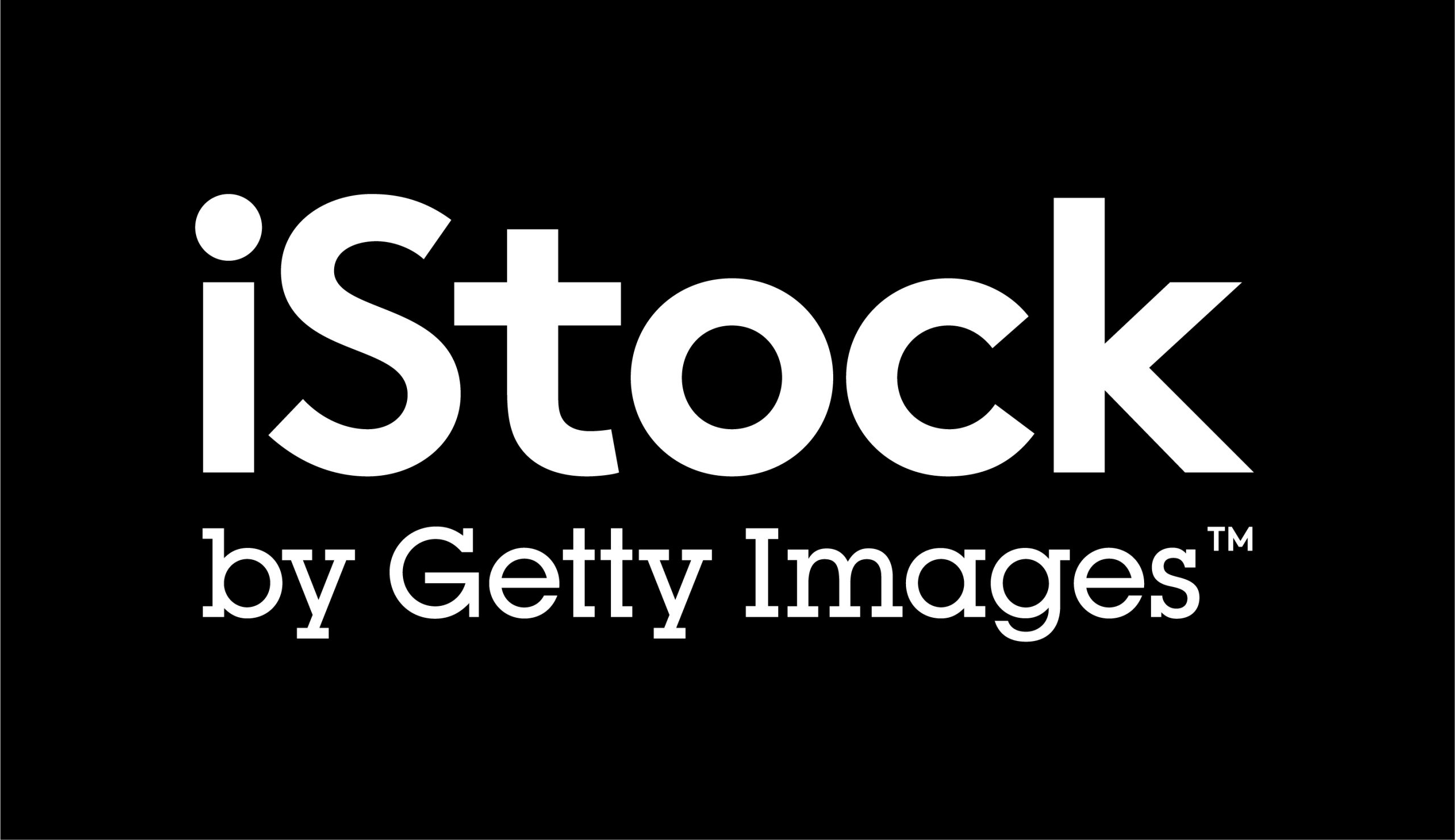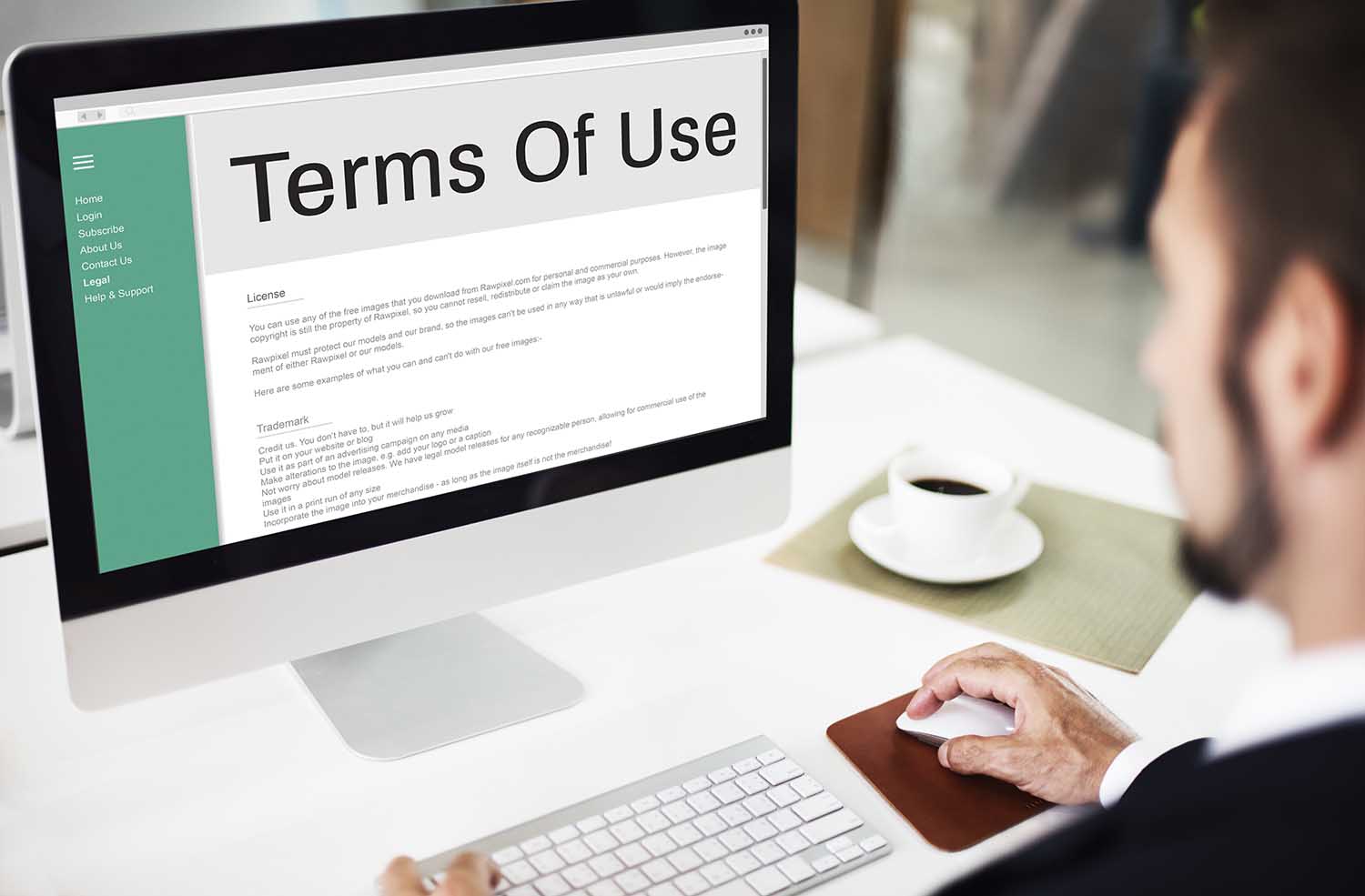Introduction
In the digital age, images play a crucial role in enhancing the visual appeal and effectiveness of various forms of content. Whether you're a blogger, website owner, or content creator, finding the right images can significantly impact the success of your project. iStock, as one of the leading stock image providers, has gained popularity for its vast collection of high-quality visuals. However, it is essential to understand the usage rights and licensing terms associated with iStock images to ensure compliance with copyright laws.
In this blog post, we will delve into the intricacies of iStock's licensing terms, explore the concept of copyright, and debunk common misconceptions surrounding copyright-free images. By the end of this article, you will have a comprehensive understanding of iStock's offerings and how to navigate the world of image copyrights effectively.
Also Read This: How to Download Bulk Instagram Images?
Copyright Basics
A. Definition and purpose of copyright
Copyright is a legal concept that grants exclusive rights to creators of original works, such as images, to control how their work is used and distributed. It serves as a means to protect the rights of creators and encourage creativity by providing them with economic incentives. Copyright law varies across countries, but it generally grants creators the exclusive right to reproduce, distribute, display, and create derivative works from their original creations.
B. How copyright applies to images
Images, including photographs, illustrations, and graphics, are considered creative works and are protected by copyright. This means that the creators or owners of these images hold the exclusive rights to control their use, reproduction, and distribution. To use someone else's copyrighted image, you typically need permission from the copyright owner, unless the image is in the public domain or subject to a specific license that allows certain uses.
C. Copyright ownership and protection
Copyright ownership usually belongs to the creator of the image, unless it is created as part of an employment agreement or the rights are transferred to another party through a legal agreement. It's important to note that copyright protection is automatic upon the creation of an original work, including images. In many countries, the copyright symbol (©) and registration are not necessary for protection. However, registering copyright can provide additional legal benefits and remedies in case of infringement.
To protect their copyrighted images, creators can employ various measures, such as adding watermarks, embedding metadata, or using digital rights management (DRM) technologies. These measures help identify and track the ownership of the images and deter unauthorized use or infringement.
Understanding the basics of copyright is crucial for anyone using or distributing images, as it helps to respect the rights of creators and avoid legal complications.
[caption id="attachment_185632" align="alignnone" width="1500"] Copyright Basics[/caption]
Copyright Basics[/caption]
Also Read This: How to Edit a Vector File from Freepik: A Simple Guide
iStock Images
A. What is iStock and its role in providing stock images
iStock is a popular online marketplace for stock images, offering a vast collection of high-quality visuals for various creative projects. It serves as a platform that connects photographers, illustrators, and other content creators with individuals and businesses in need of images for their digital or print materials. iStock acts as a mediator, facilitating the licensing and distribution of these images while ensuring compliance with copyright and usage rights.
B. Types of images available on iStock
iStock offers a wide range of images catering to diverse needs and preferences. Its extensive library includes photographs, illustrations, vectors, icons, and more. These images cover numerous categories, such as business, technology, travel, lifestyle, nature, and beyond. iStock strives to provide a comprehensive collection that caters to the needs of various industries and content creators.
C. How iStock ensures copyright compliance
iStock maintains a rigorous process to ensure copyright compliance for the images available on its platform. When content creators contribute their work to iStock, they are required to submit documents and declarations verifying that they hold the necessary rights or permissions for the images they upload. iStock has systems in place to detect and prevent the submission of copyrighted content without proper authorization.
Additionally, iStock conducts regular reviews of its image library to identify and address any potential copyright infringement issues. If a copyright infringement claim arises, iStock investigates the matter promptly and takes appropriate actions, such as removing the infringing image from its platform and resolving the issue with the involved parties.
By implementing these measures, iStock aims to provide a reliable marketplace where users can access and license images while minimizing the risk of copyright infringement. However, it's important for users to understand the licensing terms and usage rights associated with iStock images to ensure proper compliance and lawful use.
[caption id="attachment_185633" align="alignnone" width="2560"] iStock Images[/caption]
iStock Images[/caption]
Also Read This: 5 Tips for Boosting Your Facebook Reach and Engagement
Usage Rights and Licensing Terms
A. Understanding usage rights and restrictions
When using images from iStock, it's crucial to understand the usage rights and restrictions associated with them. Usage rights refer to the permissions granted by the copyright owner to use the image for specific purposes. These rights can vary depending on the type of license obtained for the image. It's essential to review and comply with the usage rights and any restrictions outlined in the license agreement to ensure legal and proper usage of iStock images.
B. Different types of licenses offered by iStock
iStock offers various types of licenses to accommodate different needs and uses of their images. The specific licenses may vary over time, so it's important to refer to iStock's current licensing options for accurate information. Common types of licenses include:
- Standard License: This is the most common license offered by iStock. It allows for a broad range of uses, such as web use, social media, blogs, presentations, and limited print runs, among others.
- Extended License: The extended license expands the usage rights granted by the standard license. It typically permits additional uses, such as incorporating the image into merchandise for resale, larger print runs, or use in templates or software applications.
C. How licenses determine the permitted uses of iStock images
The license obtained for an iStock image determines the specific uses allowed. Each license agreement provides details on the permitted usage, restrictions, and any applicable limitations. It's crucial to review the license agreement carefully to understand how the image can be used and any restrictions or requirements that must be followed.
For example, a standard license may permit the use of an image on a website or in a blog post, but it may restrict using the image in a print advertisement or incorporating it into a product for resale. On the other hand, an extended license might grant those additional permissions.
By understanding the licensing terms, users can ensure that their usage of iStock images aligns with the permissions granted, minimizing the risk of copyright infringement and legal complications.
[caption id="attachment_185634" align="alignnone" width="1500"] Usage Rights and Licensing Terms[/caption]
Usage Rights and Licensing Terms[/caption]
Also Read This: StockSnap: Unleashing Creative Treasure Troves
Copyright-Free Images
A. Misconceptions about copyright-free images
There are common misconceptions about copyright-free images that need to be clarified. Many people assume that "copyright-free" means they can use the images without any restrictions or attribution requirements. However, this is not always the case. It's important to understand that copyright-free does not mean the absence of all rights or restrictions. Instead, it typically refers to images that are in the public domain or those released under specific licenses that allow certain uses without requiring permission from the copyright owner.
B. Exploring the concept of public domain
Public domain refers to creative works, including images, that are not protected by copyright or whose copyright has expired or been forfeited. These images can be freely used, modified, and distributed by anyone without obtaining permission. Works in the public domain can include older works where the copyright has expired, works created by the government, or works where the creator has explicitly dedicated them to the public domain.
It's important to note that while public domain images can be freely used, caution should be exercised to ensure that the specific image you want to use is truly in the public domain, as some works may have elements within them that are still protected by copyright or have additional restrictions.
C. How to identify copyright-free images on iStock
On iStock, copyright-free images may be available under specific licensing options or within the public domain. To identify copyright-free images on iStock, users can utilize filters and search options provided by the platform. These filters often include a "Public Domain" category or an option to filter by license type, allowing users to specifically search for images that meet their copyright-free requirements.
When using iStock, it is crucial to carefully read the licensing information provided for each image to determine the specific usage rights and any restrictions that apply. This ensures that you are using the image in compliance with the copyright terms and requirements set forth by the image's license.
By understanding the concepts of copyright-free images, the public domain, and utilizing the search filters provided by iStock, users can find and utilize images that align with their specific usage needs while respecting copyright laws and restrictions.
[caption id="attachment_185635" align="alignnone" width="1500"] Copyright-Free Images[/caption]
Copyright-Free Images[/caption]
Also Read This: Deleting Your Storyblocks Account: Step-by-Step
Image Attribution and Editorial Use
A. Understanding image attribution requirements
Image attribution refers to the practice of giving credit to the creator or copyright owner of an image when using it in your work. While attribution requirements can vary depending on the specific license or terms of use, it is generally considered good practice to attribute the image to its creator whenever possible. Proper attribution typically includes providing the name of the creator, the title of the image (if applicable), and a reference to the source of the image.
When using iStock images, it is important to review the license agreement and check for any specific attribution requirements. Some licenses may mandate explicit attribution, while others may not require it. Even if the license does not explicitly require attribution, it is still recommended to give credit to the image's creator as a sign of respect for their work.
B. Using iStock images for editorial purposes
iStock provides images that can be used for editorial purposes, such as illustrating news articles, blog posts, or educational materials. Editorial use typically involves using images to support or enhance the accompanying text in a factual or informative manner. However, it's important to note that not all images on iStock are suitable for editorial use, as certain images may have restrictions or require additional permissions for such purposes.
When using iStock images for editorial purposes, it's crucial to adhere to the licensing terms and any restrictions outlined in the license agreement. For example, some images may not be suitable for sensitive topics or may require additional releases or permissions if they feature recognizable individuals, trademarks, or copyrighted materials.
By understanding and complying with attribution requirements and following the licensing terms for editorial use, you can ensure that your usage of iStock images is appropriate, respectful, and legally compliant.
[caption id="attachment_185636" align="alignnone" width="1500"] Image Attribution and Editorial Use[/caption]
Image Attribution and Editorial Use[/caption]
Also Read This: Photo Deals Galore: Freebies from StockSnap.io
Best Practices for Using iStock Images
A. Properly attributing iStock images
- Review the license agreement: Read the licensing terms provided for each iStock image to understand if attribution is required and what specific requirements apply.
- Provide accurate attribution: If attribution is required, ensure that you provide the correct information, including the creator's name, the image title (if applicable), and a reference to iStock as the source. Follow any formatting or placement guidelines specified in the license agreement.
- Display attribution prominently: Place the attribution in a visible and easily identifiable location, such as below or adjacent to the image. Ensure that it is clear and legible, allowing viewers to identify the creator and the source of the image.
B. Following licensing terms and restrictions
- Read and understand the license: Familiarize yourself with the specific rights and restrictions outlined in the license agreement for each iStock image you use. Take note of the permitted uses, limitations, and any restrictions related to commercial use, editorial use, modifications, or resale.
- Adhere to usage limitations: Respect the usage limitations set forth in the license agreement. If an image is licensed for specific purposes only, refrain from using it beyond those permitted uses unless you obtain additional licensing or permissions.
- Seek additional permissions when necessary: If your usage requirements exceed the scope of the license agreement, such as using an image for merchandise or incorporating it into a logo, seek additional permissions or consider upgrading to an extended license.
C. Ensuring compliance with copyright laws
- Understand copyright basics: Familiarize yourself with the fundamental concepts of copyright, including how it applies to images and the rights of copyright owners. This knowledge will help you make informed decisions when using iStock images.
- Avoid copyright infringement: Ensure that your usage of iStock images, including modifications or derivative works, does not infringe upon the rights of the image's creator or any other applicable copyright holders.
- Stay updated on copyright laws: Stay informed about any changes or updates to copyright laws in your jurisdiction to ensure ongoing compliance and avoid legal issues related to image usage.
By following these best practices, you can responsibly and legally use iStock images while respecting the rights of the creators, adhering to licensing terms, and complying with copyright laws.
[caption id="attachment_185637" align="alignnone" width="1500"] Best Practices for Using iStock Images[/caption]
Best Practices for Using iStock Images[/caption]
Also Read This: Can you make money on iStock? Exploring the earning potential for contributors.
Alternatives to iStock
A. Overview of other popular stock image platforms
While iStock is a widely recognized and reputable stock image platform, there are several other alternatives available in the market. Here are some popular stock image platforms worth considering:
- Shutterstock: Shutterstock offers a vast collection of images, illustrations, videos, and music. It provides flexible pricing options and subscription plans suitable for various needs.
- Adobe Stock: Adobe Stock integrates seamlessly with Adobe Creative Cloud applications, making it convenient for designers and creative professionals. It offers a diverse library of high-quality images, videos, and templates.
- Getty Images: Getty Images is a well-known stock agency with a broad range of premium visual content, including images, videos, and editorial photography. They have an extensive collection of rights-managed and royalty-free images.
- Unsplash: Unsplash is a popular platform offering a vast collection of high-quality, royalty-free images. It stands out for its large community of photographers and generous license that allows for wide usage.
B. Comparing licensing terms and usage rights
When considering alternatives to iStock, it is crucial to compare the licensing terms and usage rights offered by each platform. Licensing terms can vary, affecting how you can use the images. Here are some factors to consider:
- Royalty-free vs. rights-managed: Some platforms offer royalty-free licenses, allowing for broad usage with a one-time fee, while others provide rights-managed licenses, which have more specific usage rights and pricing based on factors like image size, duration, and audience.
- Commercial vs. editorial use: Determine whether the platform offers images suitable for commercial use (e.g., advertisements, marketing materials) or editorial use (e.g., news articles, blogs), depending on your specific needs.
- Extended licenses: Check if the platform offers extended licenses for more extensive usage, such as merchandise resale, large print runs, or incorporating images into products.
- Attribution requirements: Consider whether attribution is required when using images from the platform and understand the specific attribution guidelines.
By comparing licensing terms, usage rights, pricing models, and other factors, you can select the stock image platform that best aligns with your needs and ensures proper compliance with copyright and licensing requirements.
[caption id="attachment_185638" align="alignnone" width="1280"] Alternatives to iStock[/caption]
Alternatives to iStock[/caption]
Frequently Asked Question (FAQs)
Q1: Are iStock images completely copyright-free?
A: No, iStock images are not copyright-free by default. They are protected by copyright, and their usage rights and restrictions are governed by the licensing terms provided by iStock. Users must obtain the appropriate license to legally use iStock images.
Q2: Can I use iStock images for commercial purposes?
A: Yes, iStock offers licenses that allow for commercial use of their images. However, the specific licensing terms and restrictions may vary depending on the image and the type of license obtained. It is important to review the license agreement for each image to ensure compliance with the permitted commercial uses.
Q3: Do I need to provide attribution when using iStock images?
A: Attribution requirements for iStock images depend on the specific license agreement. While some images may require attribution, others may not. It is essential to review the license terms for each image and provide proper attribution if it is specified as a requirement.
Q4: Can I modify iStock images?
A: In many cases, iStock licenses allow for modifications to be made to the images. However, the specific terms and limitations may vary depending on the license type. Some modifications may require an extended license or additional permissions. It is crucial to review the license agreement to understand the permitted modifications for each image.
Q5: Can I use iStock images on social media platforms?
A: Yes, iStock images can generally be used on social media platforms, subject to the licensing terms. However, it is important to review the specific license agreement to ensure compliance with the allowed usage and any restrictions related to social media use.
Q6: Can I use iStock images in multiple projects?
A: The usage rights for iStock images vary based on the license obtained. Some licenses may allow for multiple uses across different projects, while others may have limitations on the number of projects or require an extended license for broader usage. It is advisable to review the license agreement for each image to understand the permitted use across multiple projects.
Conclusion
Understanding the usage rights and licensing terms of iStock images is crucial for responsible and legal image usage. While iStock provides a wide range of high-quality images, it's important to recognize that they are not copyright-free by default. Users must obtain the appropriate licenses and adhere to the licensing terms and restrictions. By properly attributing images, following licensing terms, and ensuring compliance with copyright laws, users can confidently utilize iStock images in their projects while respecting the rights of creators.
Additionally, exploring alternative stock image platforms and comparing licensing terms can provide more options for finding suitable images for specific needs. Ultimately, being informed and conscientious about image copyrights and licensing ensures ethical and lawful image usage.









































